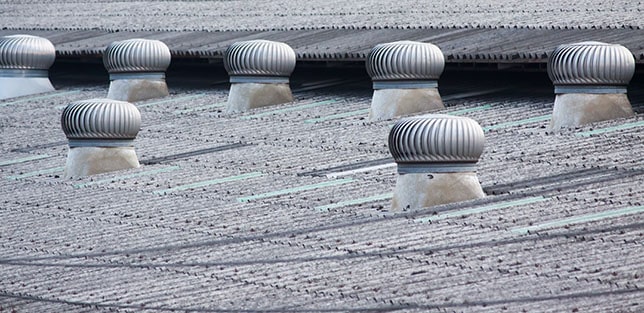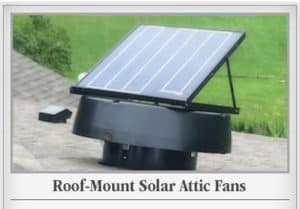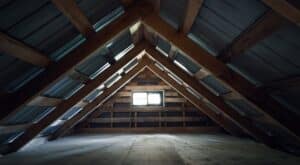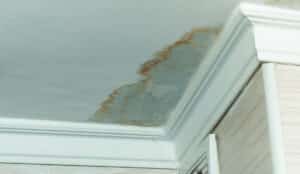How your attic exhales
We have been blogging about the need for proper attic ventilation, a way to protect your home from problems caused by heat and moisture which builds up in the attic. Given the problem of winter ice dams in the Grand Rapids area, this is especially important. You may see homes in your area with large icicles hanging from the eaves. This is related to attic ventilation. Here we will look at how an attic can exhale, flushing out the heat and moisture that cause ice dams in winter, deteriorate the roof and roof structure and make your home hard (and expensive!) to cool in summer.
Ideally, the snow should stay on a roof through the winter, however, heat trapped in the attic melts the snow on the roof and the water freezes when it gets to the cold eaves, causing icicles and ice dams. In the worst scenarios, water trapped behind an ice dam finds a way through the roofing and into the house. We have seen homes where plaster ceilings have fallen in because of this problem.

There are a number of ways for your attic to exhale. Pot vents are very common exhaust device. These are made to go near the peak, but we see many mounted down-roof, which creates problems.

Ridge vents have become the exhaust system of choice lately. A good ridge vent creates a vacuum when wind blows over it, actively pulling air out of the attic. However, some ridge vents without baffles do not effectively pull air out.


On some roof lines’ ridge vents will not supply enough ventilation. Above Roofing and Exteriors installs solar-powered attic fans as well as electric-powered fans.
One of the problems we see too much of is a roofline where there are too many forms of exhausts. A system that has pot vents or gable vents along with a ridge vent is one example. The pot or gable vents actually short-circuit the action of the ridge vent, making it ineffective.
Above Roofing and Exteriors has 20 years of experience in roofing in the Grand Rapids and Western Michigan area and is careful to design the right ventilation system for the application. When we look at installing a roof on your home, we will inspect the ventilation system and suggest changes, if needed, to make sure your home does not have “asthma.” Call us so we can help you protect your home from the damaging effects of heat and moisture buildup in your attic.





